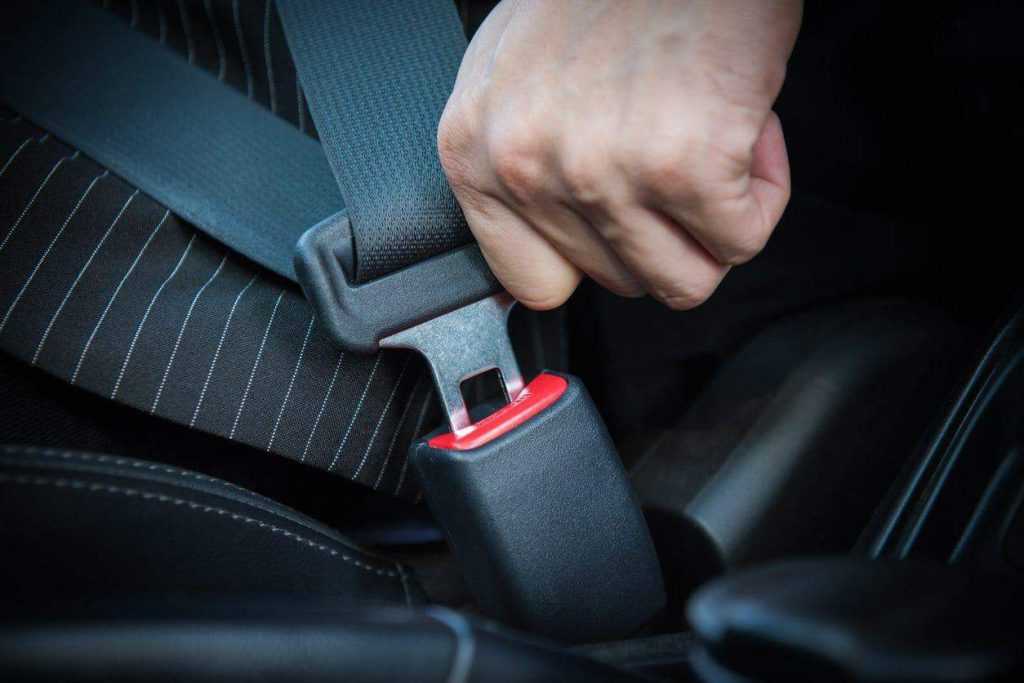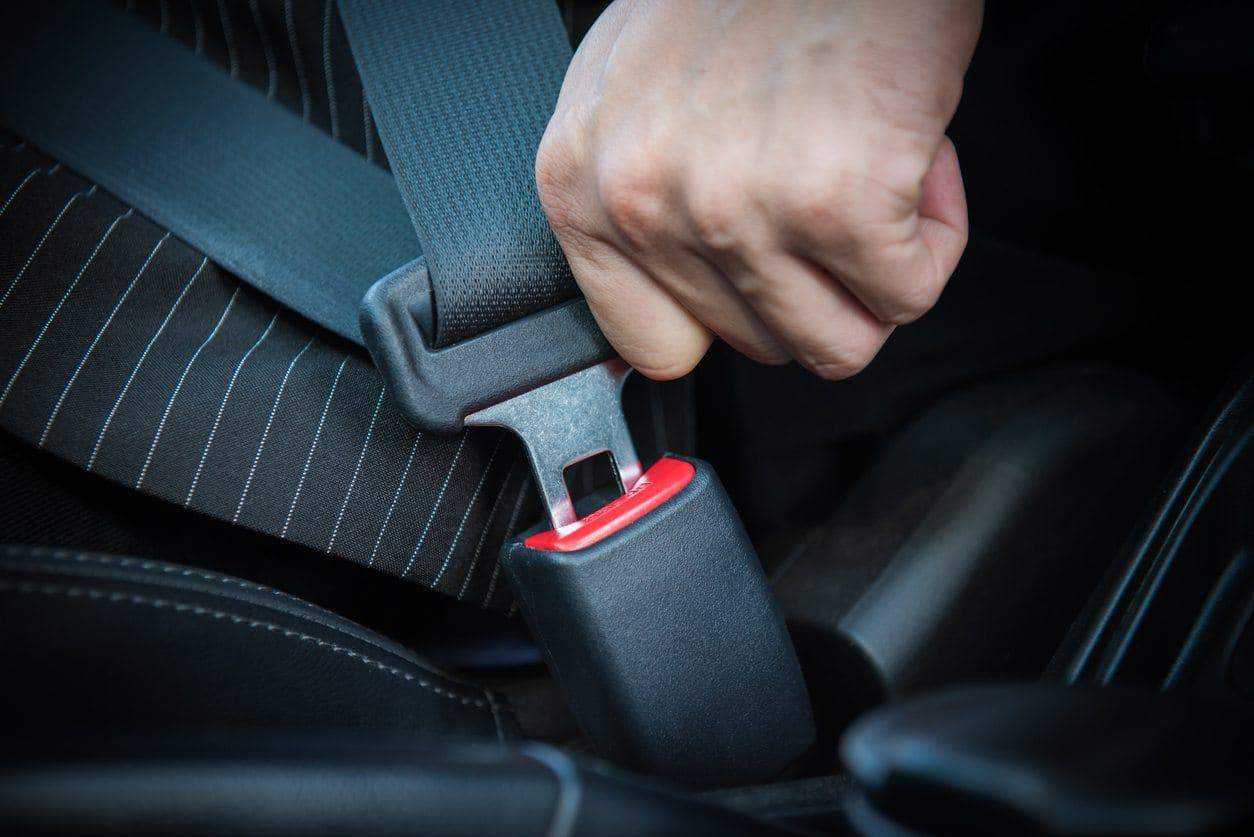It’s hard to pinpoint who came up with the idea for seat belts in cars, but they have saved lives. According to the U.S. Centers for Disease Control (CDC), seat belts are one of the most effective ways to mitigate injuries and avoid fatalities in the event of a crash.
Despite the common knowledge surrounding seat belts’ benefits, some adults choose not to wear them. This can be an issue in a car accident claim. When one driver blames another motorist for causing a crash, that motorist and their insurer get to mount a defense. They can allege the driver was also at fault for their injuries. In over half of U.S. states, though, there’s something insurers can’t do in a lawsuit: They can’t point out the victim wasn’t wearing their seat belt.
Contents
Seat Belt Laws Around the U.S.
The first we know of people using seat belts is from doctors installing lap belts in their cars as early as the 1930s. The idea of safety belts gained traction through the ‘40s and ‘50s. In 1958, a Swedish design engineer, Nils Bohlin, patented a three-point safety belt that Volvo began to install in their vehicles.
It wasn’t until 1965 that all U.S. manufacturers were providing lab belts in front seats. In ’67, the young National Highway Safety Bureau issued the first standards for lap and shoulder belts. Over time, standards and attitudes regarding seat belts evolved, and individual states began to implement their own requirements.
Seat belt laws in the U.S. are either primary laws or secondary laws. As a primary law, police officers can pull a vehicle over if anyone in the vehicle isn’t wearing their seat belt. As a secondary law, officers can pull a vehicle over only if the driver commits another traffic offense. Then, the officer can ticket the driver for both offenses.
According to the Governor’s Highway Safety Association, 34 states, the District of Columbia, Puerto Rico, the Virgin Islands, the Northern Mariana Islands, and Guam have primary seat belt laws. In comparison, 15 states have secondary laws for adult front-seat occupants.
But there are differences among how states treat front and back seat belt use. Nineteen states, D.C., and two territories’ laws allow primary enforcement for back seats, too, while 11 states say rear seats are secondary enforcement. Another 20 states don’t have laws enforcing rear seat belt use at all.
Many adults question whether they should wear seat belts if they’re in the back of a car. Here’s what Accidentattorneys.org had to say “Just because something is legal, it doesn’t mean it’s safe. For many years, it was not illegal to ride in the front seat without a seat belt, but many people died then who were unrestrained as they do now. It is clear that wearing seat belts in the back seat is necessary for adults just as it is for children.”
Seat Belt Safety Statistics

Over time, statistics continue to show the importance of wearing a seat belt. In 2017, 37,133 people were killed in motor vehicle crashes in the U.S., and 47% of those victims were not wearing seat belts, according to the National Highway Traffic Safety Administration (NHTSA). It estimates that in 2017 alone, seat belts saved about 14,955 lives.
Not only can you save your life by wearing a seat belt, but you also mitigate your potential injuries. When you wear your seat belt in the front seat of a passenger car, you reduce the risk of a moderate-to-critical injury by 50%, the NHTSA reported.
“When a seat belt is designed properly and functions well, it is probably the most important safety component in your car,” according to Arnold & Itkin LLP, trial lawyers who handle defective seat belt claims.
Seat Belt Use in Kentucky
Kentucky has primary seat belt laws that cover all drivers, passengers seven years and older in all seats, and passengers six and younger who are more than 50 inches tall in all seats. To avoid child car accident injuries, “it is important to make sure that your children are properly secured in your vehicle, “ warns Flora Stuart. “Those old enough to ride without the use of a car seat should wear seat belts.”
It can be tricky to know when to switch from a child car seat to the seat belt. Follow the manufacturer’s guidelines and use information from safekids.org’s Ultimate Car Seat Guide.
Kentucky is slightly below the nation in seat belt use. While self-reports show 86% of U.S. motorists wear seat belts, 84% of Kentuckians wear them, according to the CDC. That is still the vast majority of drivers and passengers, which is good news.
Evidence of Seat Belt Use During a Car Crash
Wearing a seat belt is the safest way to ride in a vehicle, though the law doesn’t always require it. In some states, adults can forgo wearing a seat belt in the back seat. But what are the consequences of not wearing a seat belt during a car accident claim?
If you were injured in a crash and filed a lawsuit against the other driver, that motorist might be able to present evidence that you weren’t wearing a seat belt. Why would they want to do that? Because of comparative negligence laws.
All states allow courts to decide how much each party contributed to an accident. If the jury finds your careless conduct contributed to your injuries, you might not recover as much compensation. In the few states that follow a pure contributory negligence rule, you can’t recover compensation at all.
“Wisconsin’s law requiring safety belt use allows a damage claim to be reduced by as much as 15 percent for parties not wearing safety belts,” according to Brent Smith, an attorney at Johns, Flaherty & Collins.
Wisconsin is one of 15 states that have a way for defendants to raise the issue of the victim not wearing a seat belt at the time of the crash. Hawaii and North Dakota have indicated they too might allow a seat belt defense.
Thirty states, including Kentucky, don’t let insurance companies present evidence of a victim not wearing a seat belt. Some legal professionals think this ban is outdated. As the Texas Supreme Court said, the “prohibition on seat-belt evidence” is “an anachronism” from when seat belt use wasn’t legally required or as commonplace as it is now. Others believe it protects car crash victims from facing an undue burden when they’re already suffering.
In Georgia, the seat belt defense is up for debate. Georgia is one of the 30 states that doesn’t let defendants present evidence of seat belt use. Some legislators are looking to change that, and it worries many personal injury lawyers and other legal professionals.
Emory University law professor, Frank Vandall, worries it would increase litigation costs for crash victims and scare them away from pursuing their claims. “You’re really protecting the insurance companies because they have to pay for the liability,” Vandall said. “All it does is keep more money that you pay with the insurance companies.”
Whether Georgia or other states shift their stance on seat belt evidence remains to be seen. What is still clear is that wearing a seat belt is the safest way to ride in a vehicle.



